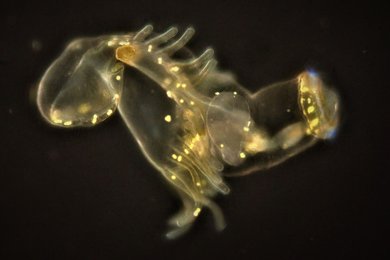“Wherever you go to the sea and throw out a plankton net, you will catch something and usually immediately have much more material than you can examine microscopically in a given period of time”; Prof. Dr. Otto Larink, retired professor of zoology at TU Braunschweig, describes the special feature of his work with plankton. 170 plankton videos are now available exclusively on TIB AV-Portal – they are the result of years of documentation by Prof. Larink on the North Sea island of Helgoland.
As early as the 1960s, during his studies in Kiel, Larink was concerned with plankton, which is best observed alive. After his first stay at the Biological Institute Helgoland in 1963, many more stays followed, in the meantime about 75. He also regularly led marine biology courses there for the students of TU Braunschweig between 1969 and 2004. During this time, he built up an impressive collection of microphotographs, which were published in an identification book for marine plankton, written togetherr with the zoologist Wilfried Westheide.
